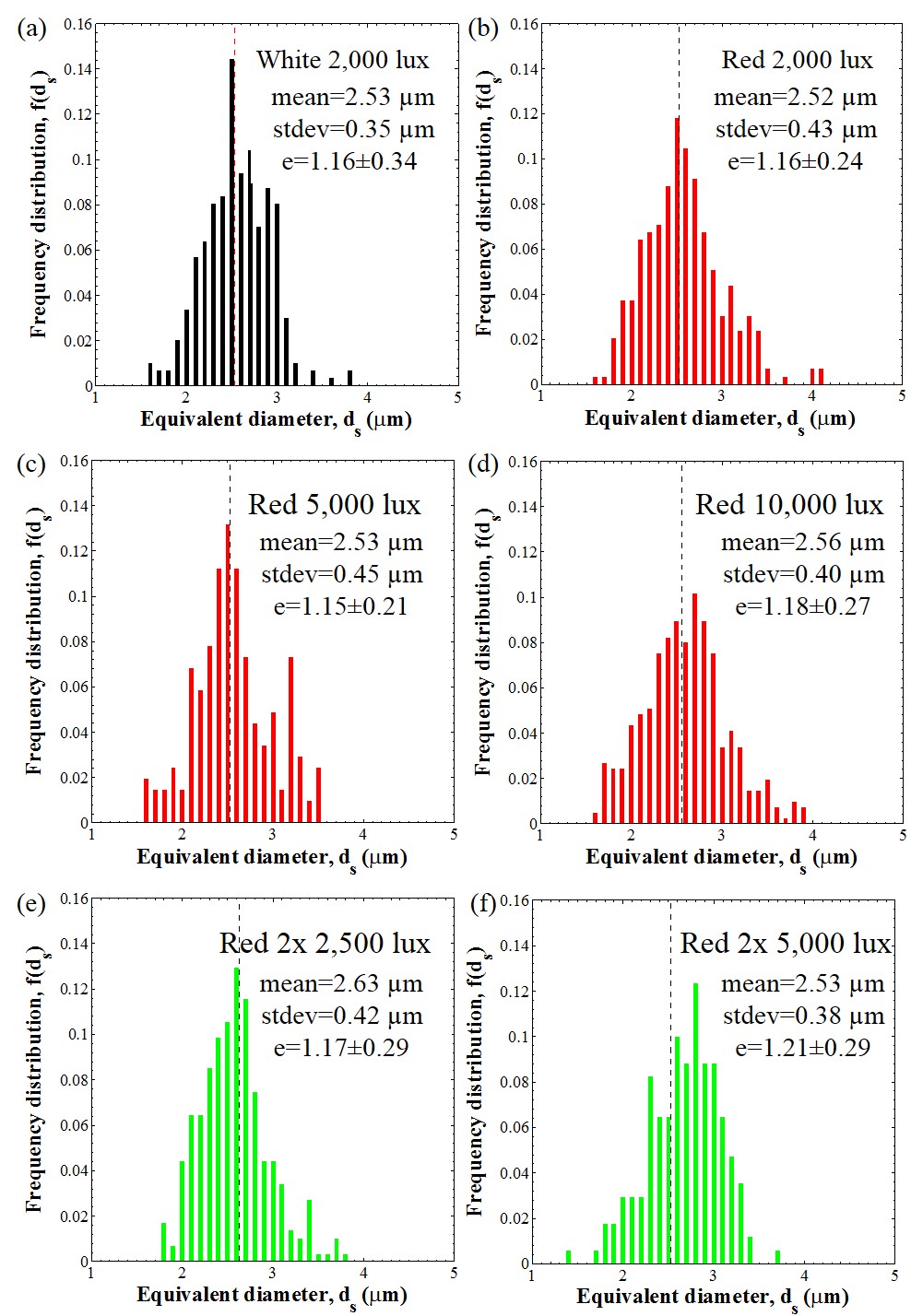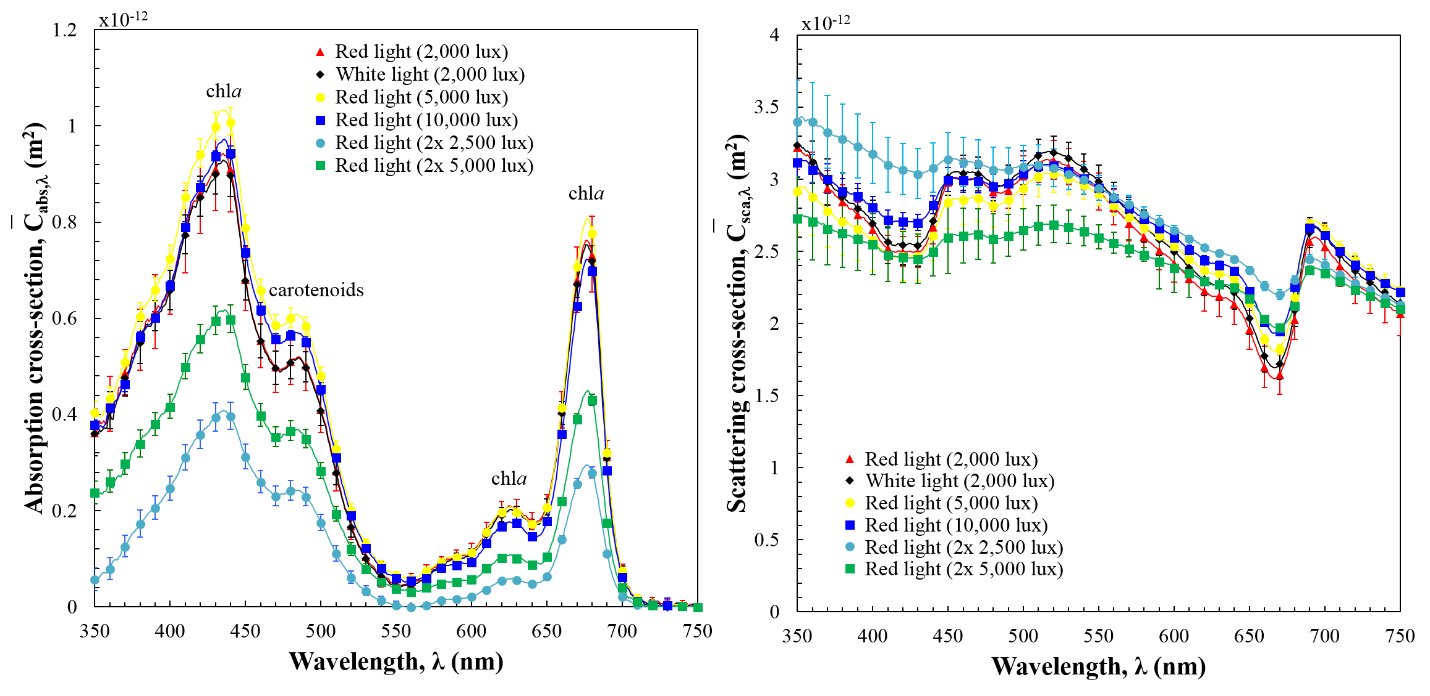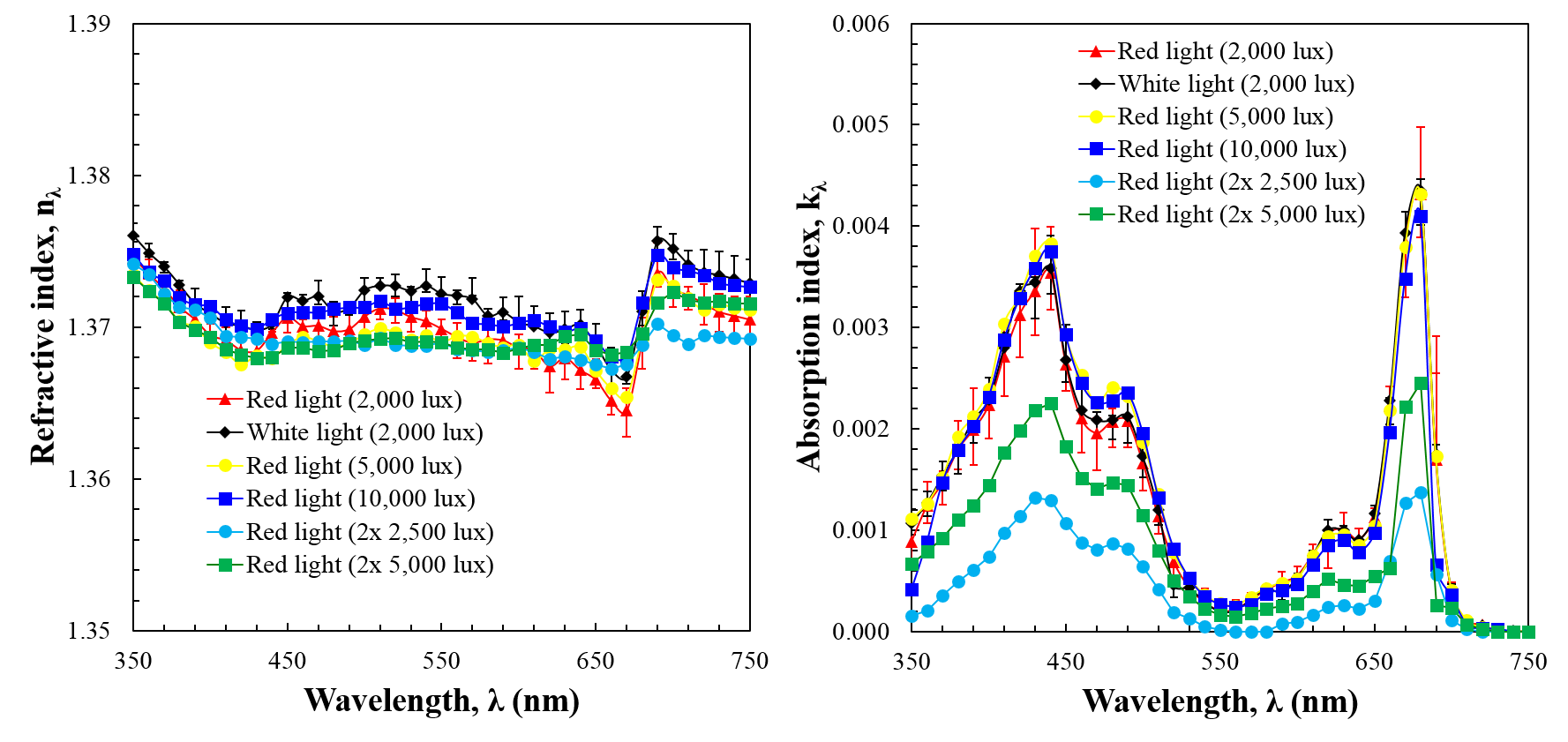Motivation
Light utilization efficiency of these PBRs is arguably the most important parameter affecting the overall efficiency of the biofuel production process. Thus, careful light transfer analysis must be conducted to design and optimize the light availability in PBRs and to operate them efficiently (Pilon et al., 2011). To do so, the spectral radiation characteristics of microalgae are necessary (Pilon et al., 2011).
This study specifically aims to measure the average absorption and scattering cross-sections and the total scattering phase function of Nannochloropsis oculata along with their complex index of refraction in the photosynthetically active radiation (PAR) region. It also aims to assess their dependency on the spectral distribution and the amplitude of the illuminance provided to the PBR during the microalgae growth.
Results
This study reports accurate measurements of the radiation characteristics and optical properties of Nannochloropsis oculata in the photosynthetically active radiation (PAR) region. These marine microalgae were grown in 2 cm thick culture bottle with vented cap exposed, on one side, to either white fluorescent light bulbs or red LEDs emitting at 630 nm. The illuminance varied from 2,000 to 10,000 lux.
Figure 1 shows the size distribution of the cells grown under these different conditions. The microalgae average equivalent diameter ranged from 2.52 to 2.63 μm.

Fig. 1. Histogram of frequency distribution f(ds) of the equivalent diameter ds of N. oculata grown under (a) white light at 2000 lux and red LEDs at (b) 2000 lux,(c) 5000 lux,(d) 10,000 lux, (e) 2500 lux from two side, and (f) 5000 lux from two sides.
Fig. 2 shows that the radiation characteristics of N. oculata grown under different colors were statistically identical over most of the PAR region. However, N. oculata grown with 2 vol.% CO2 injection in 1 cm thick at bottles exposed to light from two sides reached a significantly larger mass concentration and featured lower pigment concentration and smaller absorption cross-sections likely due to nutrient limited growth conditions.

Fig.2. Average spectral (a) absorption Cabs,λ and (b) scattering Csca,λ cross-sections of N. oculata grown with fluorescent white light with illuminance of 2000 lux and red LEDs with illuminance ranging from 2000 to 10,000 lux. Absorption peaks of chl a were observed at 436, 630, and 676 nm and that of carotenoids at 480 nm.
Similarly, the refraction index was independent of illuminance, spectrum, and growth conditions and featured resonance at wavelengths corresponding to absorption peaks of pigments including Chl a, .

Fig. 3. Spectral (left) refraction nλ and (right) absorption kλ indices of N. oculata retrieved using Lorenz–Mie theory for microalgae grown (i) in culture bottles with vented caps illuminated on one side with fluorescent white light of illuminance of 2000 lux and red LEDs with illuminance ranging from 2000 to 10,000 lux and (ii) in 1 cm thick PBR injected with 2 vol.% CO2 and illuminated on both sides by 2 x 2500 lux and 2 x 5000 lux.
Conclusion
- The equivalent cell diameter and the cell aspect ratio did not vary appreciably for the different illumination conditions considered. In all cases, the average equivalent diameter was between 2.51 and 2.63 μm and the standard deviation was 0.35-0.45 μm.
- The absorption and scattering cross-sections for N. oculata grown under 2,000 lux of white and red light sources fell within their experimental uncertainty ranges for all wavelengths considered indicating that no chromatic adaptation occurred in the cells despite the different emission spectra of the fluorescent white light and the red LEDs.
- By contrast, N. oculata grown in PBR exposed to red light from both sides and injected with 2 vol.% CO2/air mixture featured smaller absorption cross-sections than those grown in the thicker bioreactors exposed to light from only one side. This may be explained by the nutrient depletion in the medium.
- The refraction index nλ ranged from 1.365 to 1.376 featured dips at wavelengths corresponding to peaks observed in the effective absorption index kλ.
- The effective absorption index kλ ranged from 0 to 4.32x10-3 with peaks at 436, 480, 630, and 676 nm. It was the same for N. oculata grown under white light and red LEDs with illuminance of 2,000 lux and under red LEDs with 5,000 and 10,000 lux. In addition, the absorption index of microalgae grown in the 1 cm thick PBRs with 2 x 2,500 lux red LEDs was on average 76% lower than that of microalgae grown with 5,000 lux red LEDs exposed from one side. Similarly, microalgae grown in the 1 cm thick PBR with 2 x 5,000 lux red light had absorption index 36% smaller than those grown under red light at 10,000 lux.
Publications
R. Kandilian, E. Lee, and L. Pilon, 2013. Radiation and Optical Properties of Nannochloropsis oculata Grown Under Different Irradiances and Spectra. Bioresource Technology, Vol. 137, pp. 63-73. doi:10.1016/j.biortech.2013.03.058 pdf
L. Pilon, H. Berberoğlu, and R. Kandilian, 2011. Radiation Transfer in Photobiological CO2 Fixation and Fuel Productionby Microalgae, Journal of Quantitative Spectroscopy and Radiation Transfer, Vol. 112, no. 17, pp. 2639–2660. doi:10.1016/j.jqsrt.2011.07.004 pdf